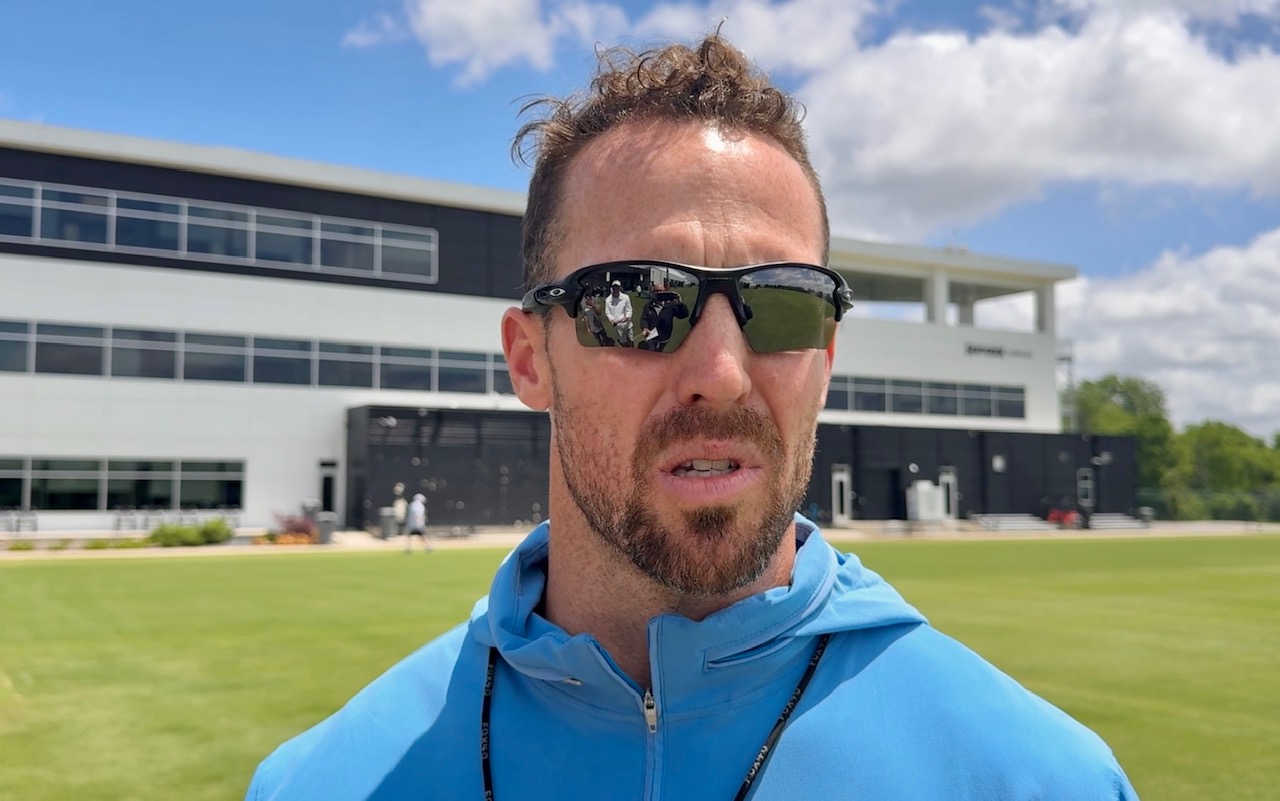NASHVILLE, Tenn. – Injuries have been a major concern for the Titans for the last three seasons as they’ve used at least 83 players a year, straining depth. A major talking point was how much fault should have been aimed at the strength and conditioning department.
Thursday, Brian Callahan did something that would have been unheard of under Mike Vrabel. When the Titans rolled out their offensive assistants, there in wraparound shades and a blue Titans short-sleeved windbreaker with a whistle around his neck was an absolute shocker: Zac Woodfin, the Titans director of sports performance.

“We like to say our program is a blue-collar, cutting-edge program,” he said. “And what I mean by that is blue collar in the sense that there is no getting around doing hard work. You’ve got to lift hard, you’ve got to lift heavy at the appropriate times. And then the cutting edge in the science that we bring to it: making sure our guys have the proper assessment through technology. It allows us to get a really clear picture of what they need. Everybody needs something a little bit different to achieve their maximum performance.
“We try to do a great job of riding that fine line of blue-collar and cutting edge.”
Too much blue collar and players don’t have enough juice on game day. Too much science and there isn’t enough resilience, roughness or hardness to be effective late in games.
Right there, we learned more about the Titans' weight room strategy than we ever really knew about what Frank Piraino, now with the Giants, aimed to do for the final five years of Vrabel’s tenure.
Woodfin doesn’t know a lot about what unfolded before he arrived.
But he thinks the sports science is up and that they are doing more in speed development.
That makes sense as while the team doubled the size of the department it was able to add John Shaw, whose title is “assistant, sports performance/ speed development.”
When I asked Will Levis his thoughts on the changes to sports development, he quickly talked about speed.
Will Levis has bought in to the #Titans’ new sports performance program. pic.twitter.com/tpo1FPyHZi
— Paul Kuharsky (@PaulKuharskyNFL) May 9, 2024
As for injuries, Woodfin said his department is certainly part of things
“Our guys play the most violent physical game in the world,” he said. “Injuries are multi-factor. It’s really your whole organization. How we practice. How we eat. How we stress sleep. How we stress hydration. Everybody in the building has a hand in it. Of course being the director of our performance department, it’s important to me. But it’s more than just about me. So what we try to do and Brian (Callahan) and Ran (Carthon) and Chad (Binker), from the whole organizational perspective is acting in the same ways to help our team be healthy and be fast and be ready to play at a high level on game day is everything we do is evidence-based: How we warm up for practice, how we warm up for games, how we train, how we assess our athletes and try to find asymmetries.
"What we are doing to try to mitigate, we’re not going to prevent, but we can mitigate, is be sound with the evidence of what we know reduces injury, and that’s not just the way you train, it’s the way you eat, the way you sleep, it’s the way you practice. It’s really a team, collective effort, organization-wide.”
Here’s Woodfin in more detail on finding and addressing asymmetries:
These are answers about philosophy and alignment that should make you feel like there is a plan that goes far beyond the top guy saying trust me.
It represents a lot of the positive change that is going on, and the transparency of a lot of that change.
It's not injury season, of course. And there are still going to be pulls and breaks and missed starts and, probably season-ending injuries that dent the depth chart.
Still, if you've been a big fan of this team for the last several years, count this as an exciting development that's not too far short of a magician pulling away a sheet to reveal something you've really been curious about.










You are not authorised to post comments.